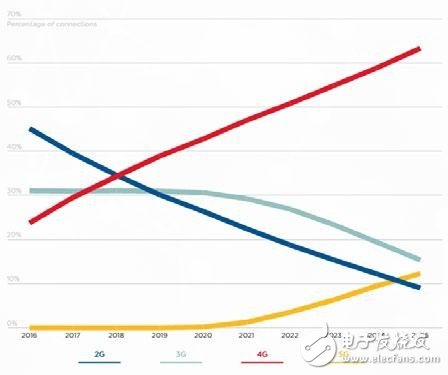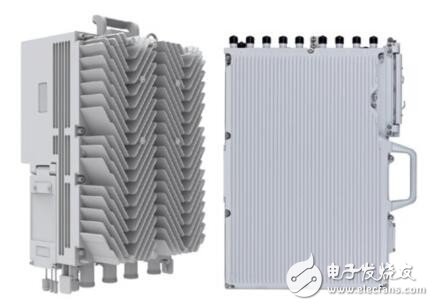From a technological development standpoint, 5G is not just an evolution of 4G but also a natural extension and improvement. While it brings new innovations, it still relies on the foundation laid by 4G. In terms of network deployment, early 5G rollout may not be fully widespread, so it will need to work alongside the more mature and widely covered 4G network. Let’s take a closer look at how this integration supports network evolution.
According to GSMA predictions (see Figure 1), 4G will continue to grow rapidly for many years. Even in terms of traffic volume, 4G is expected to remain dominant over 5G for some time. This trend is influenced by the maturity of 4G technology, its ongoing development potential, the wide variety of devices available, and the uneven global network development. In this context, integrating 4G and 5G becomes crucial for operators to optimize investment and maintain competitive advantage. This makes the technical solutions for 4G/5G integration both urgent and essential.

Figure 1: Wireless Network Development Curve Prediction
The evolution of 4G networks should incorporate as much 5G technology as possible. By applying some 5G features to 4G ahead of time, users can enjoy better services without splitting the two technologies apart. ZTE’s Massive MIMO products are a great example of this approach. They bring 5G core technology into existing 4G networks, improving spectrum efficiency without changing the core network or replacing existing terminals. At the same time, upgrading 4G infrastructure should prepare for future 5G deployment, ensuring a smooth transition and protecting previous investments.

Figure 2: ZTE's New Generation 4G/5G Dual-Mode RRU – ZXRAN R8894E (left) and ZXRAN R8998E (right)
The integration of 4G and 5G naturally requires a phased approach. In the first phase, 4G networks, combined with LTE-A, LTE-A Pro, and some 5G technologies, will evolve toward higher capacity, lower latency, and more flexible architectures. ZTE’s Pre5G solution integrates advanced technologies like Massive MIMO, LAA, and NB-IoT/eMTC, and has been deployed in over 110 networks across 60 countries worldwide.
In the second phase, after the release of the first 5G standard in 2018, some operators began deploying 5G networks. During this time, 4G and 5G will coexist, with 4G terminals still dominating. To support this, converged 4G/5G product solutions are needed. For example, ZTE’s Pre5G Massive MIMO allows seamless upgrades to 5G without major changes. Even older 4G RRUs can be upgraded to support 5G through software. Products like R8894E and R8998E already support both 4G and 5G, offering a cost-effective and flexible path to 5G deployment.
From the BBU perspective, the next-generation ZTE BBU is based on an IT platform and supports both 4G and 5G simultaneously. It enables dual connectivity and offers high capacity, compact size, and flexible deployment. The V9200-based BBU can be configured flexibly to meet various deployment needs, making it a key component in the transition from 4G to 5G.
The convergence of 4G and 5G ensures a smooth network evolution. ZTE’s comprehensive 4G/5G solutions, combined with efficient deployment and long-term support, help operators stay ahead in the 5G era. As we move forward, the integration of these technologies will play a vital role in shaping the future of wireless communication.
This article provides insights into how 4G and 5G integration drives network evolution. If you want to learn more about the latest developments in network communication, keep following eeworld. We’ll continue to provide detailed and up-to-date information for your reference.
Stage Effect Lights,Led Laser Moving Head,Strobe Stage Lighting,Moving Head Strobe
Guangzhou Cheng Wen Photoelectric Technology Co., Ltd. , https://www.cwledwall.com